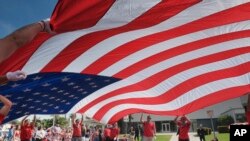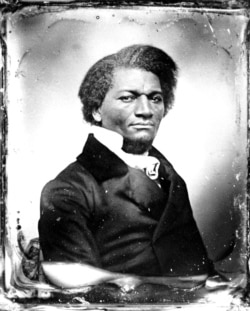It was founding father John Adams who first suggested that Americans should throw an annual party — a “great anniversary festival” — to celebrate the nation’s independence from England.
In a July 3, 1776, letter to his beloved wife Abigail, America’s second president wrote, “It ought to be solemnized with pomp and parade, with shows, games, sports, guns, bells, bonfires, and illuminations, from one end of this continent to the other, from this time forward forevermore.”
“If you could channel John Adams, he would be very pleased to see that the nation still celebrated this event which he thought should be marked forever,” says Mary Beth Norton, a recently retired professor of history at Cornell University and author of a forthcoming book, 1774: The Long Year of Revolution. “Even though they're not doing it on the day that he thought they would.”
Adams thought the nation’s independence should be celebrated on July 2. That’s when the Continental Congress, the body of delegates that governed the American colonies, actually voted for independence from England.
The written Declaration of Independence, the nation’s founding document, was dated July 4, 1776. However, the document wasn’t actually signed until August 2. Fifty-six delegates eventually signed, although not all at once and not all on August 2.
“People were in and out, and when they had the opportunity they came and signed it,” says Norton. “But there was no scene...of all of them sort of standing around waiting to sign a declaration.”
The Declaration of Independence famously states that all men are created equal and that they have the right to life, liberty and the pursuit of happiness.
The founding fathers saw women’s education as critical to the future of the fledgling republic and insisted that women, as well as men, be educated after the Revolution.
“They basically said, ‘We need every citizen of the Republic, including women,’ even though they couldn't vote at that point and were not going to vote for another more than 100 years, ‘we need them to be active participants in the nation. They need to know the national history because they need to teach their children,’” Norton says.
Today, the ways in which Americans celebrate the Fourth of July differ. Many will host or attend cookouts. The three most popular foods that’ll be consumed are hamburgers, barbecued meats and hotdogs, according to a recent survey conducted by TopCashBack.com.
Attending a fireworks celebration is also high on many people’s lists.
Whatever they do, 86 percent of Americans say they plan to actively celebrate Independence Day.
Jim Grossman, executive director of the American Historical Association, believes widespread enthusiasm for the holiday stems from the fact that Independence Day honors all Americans.
“It's celebrating democratic institutions, principles of freedom, principles of equality,” he says. “We can all get behind that. It's not a single religion. It's not a single group. It honors all Americans for their participation in civic culture, beginning with a group of Americans who gathered to declare the nation to be independent based upon a set of principles that are very admirable.”
One of the most memorable Fourth of July speeches was given by Frederick Douglass, a social reformer and writer who’d escaped slavery in Maryland.
He highlighted the hypocrisy of the ideals of freedom in a country where enslaved people remained in bondage. Speaking at an Independence Day celebration on July 5, 1852, Douglass famously asked, "What to the Slave is the Fourth of July?"
“He basically says, ‘Yeah, this is about freedom and that doesn't pertain to us in this country,’” says Grossman, adding that Douglass pointed out, “the distance between the principles enunciated in America's founding documents and the ways in which American politics and social order had played out since the 1770s.”
Norton believes Americans should take the time this Fourth of July to reflect upon their role in ensuring America remains a republic based on the notion that people can govern themselves.
“For me, it’s a day to reflect on everybody's responsibilities to the nation, which goes far beyond the military's responsibilities to the nation,” Norton says. “I think it's everyone's mutual responsibility to maintain the republic... this was something that very much concerned Adams and the other leaders of the revolution. They knew the history of the Roman Republic and how it had turned into a dictatorship.”









